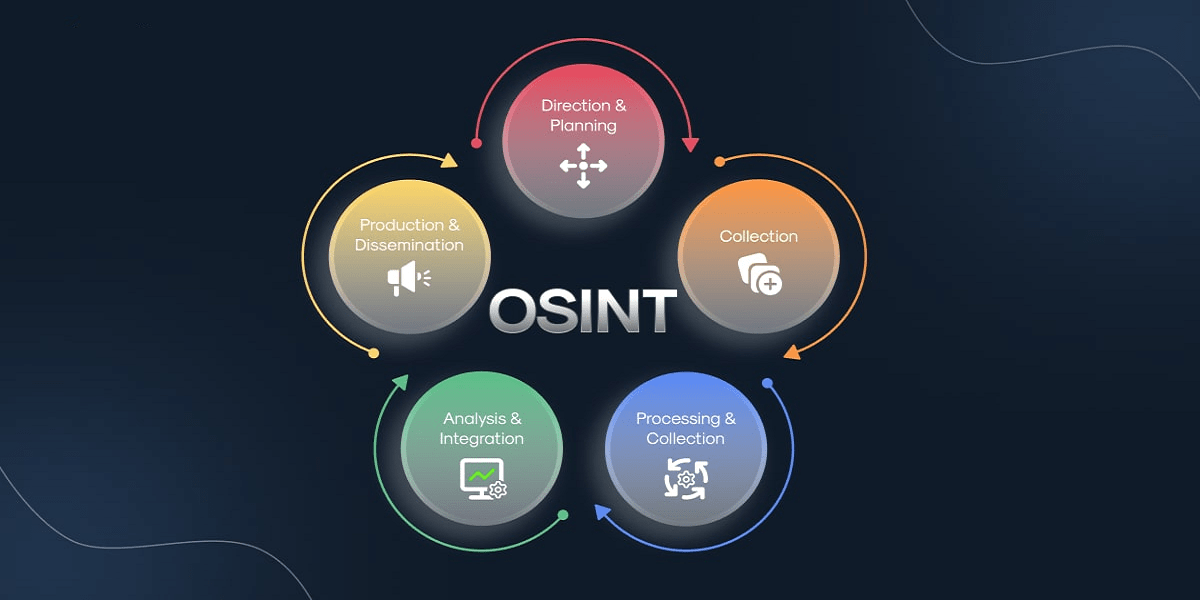he rapid expansion of data and information available through open sources has fundamentally changed the landscape of intelligence gathering. With the rise of digital platforms, social media, forums, and public databases, vast amounts of publicly available data are created every second. Open Source Intelligence (OSINT) plays a crucial role in transforming this data into actionable insights. However, as the volume of information grows, so does the challenge of efficiently processing and analyzing this vast ocean of data. This is where the integration of Artificial Intelligence (AI), specifically advanced language models like ChatGPT, comes into play. By leveraging ChatGPT’s natural language understanding and processing abilities, OSINT industries are now equipped with a powerful tool that is revolutionizing how intelligence is collected, processed, and analyzed.
In this article, we will explore how ChatGPT, an AI language model developed by OpenAI, is redefining the OSINT landscape. We will discuss its impact on data collection, analysis, decision-making, and reporting within industries that rely on OSINT, such as law enforcement, cybersecurity, corporate intelligence, and more. Additionally, we will delve into the challenges and ethical considerations that come with the integration of AI into OSINT practices.
Understanding OSINT and Its Importance
Open Source Intelligence (OSINT) refers to the process of collecting, analyzing, and using publicly available information from various open sources to support decision-making, investigations, and strategic planning. OSINT can come from an array of sources, including news articles, social media platforms, blogs, academic publications, government reports, and public databases.
Industries like law enforcement, defense, intelligence agencies, cybersecurity, journalism, and corporate research rely on OSINT to gain insights into threats, trends, and opportunities. For example, OSINT plays a critical role in identifying security vulnerabilities, tracking global geopolitical developments, monitoring social movements, and assessing public sentiment.
However, OSINT presents a significant challenge. The sheer volume of available data is immense, and much of it is unstructured. Extracting meaningful and relevant information requires human analysts who can process and analyze this data effectively. Traditional OSINT methods, though effective, are often slow, labor-intensive, and prone to human error. The introduction of AI technologies like ChatGPT aims to alleviate these challenges, making OSINT processes faster, more accurate, and more efficient.
The Role of ChatGPT in OSINT
ChatGPT, a sophisticated AI language model created by OpenAI, is designed to understand and generate human-like text. With its natural language processing (NLP) capabilities, ChatGPT can analyze vast amounts of text data and respond to queries in a conversational manner. When applied to the field of OSINT, ChatGPT serves as a powerful tool that can enhance data collection, streamline analysis, and support decision-making processes. Let’s examine how ChatGPT is transforming OSINT industries across various sectors.
1. Efficient Data Collection and Processing
The first step in any OSINT operation is collecting data from various open sources. With traditional methods, analysts spend significant time gathering information manually. For example, they might need to visit numerous websites, monitor social media feeds, or scour news outlets for relevant stories. As the volume of online data increases, this process becomes increasingly difficult to manage.
ChatGPT can automate this data collection process. By integrating ChatGPT with OSINT tools and platforms, organizations can rapidly scan large volumes of open-source data, including news articles, blogs, social media posts, and even academic papers. ChatGPT can also categorize this information, flagging key trends, events, or topics of interest. The model’s ability to process unstructured data—like text, images, and video captions—enables OSINT professionals to collect insights from diverse sources efficiently.
In addition to its ability to process written text, ChatGPT can also interpret sentiment in data, helping analysts understand the tone and emotional context of posts or articles. For instance, ChatGPT can identify whether social media discussions around a particular event are positive, negative, or neutral, providing valuable context for decision-makers.
2. Automated Data Analysis and Insights Generation
Once data is collected, the next challenge is to analyze it in a way that generates actionable insights. Traditional OSINT analysis requires analysts to sift through massive amounts of raw data to identify patterns, correlations, or emerging trends. This is a time-consuming process that may also suffer from human biases or errors.
ChatGPT can expedite the data analysis process by automatically identifying key pieces of information and summarizing them. It can scan documents, websites, and other sources to extract relevant details and present them in a clear, concise format. By processing data through its neural network, ChatGPT is able to draw connections between different pieces of information, uncovering insights that might have been missed by human analysts.
For example, if an analyst needs to understand the political landscape in a particular region, ChatGPT can automatically analyze news reports, social media posts, and government publications, synthesizing this information into a comprehensive overview. This allows analysts to gain insights faster and focus on higher-level decision-making.
Additionally, ChatGPT can analyze the context of certain data points, such as identifying the implications of a new law or understanding the social dynamics behind a trending topic. This deeper analysis is valuable in complex investigations where the relationships between pieces of information may not be immediately obvious.
3. Natural Language Queries for Streamlined Information Retrieval
One of the key features that sets ChatGPT apart is its ability to understand and respond to natural language queries. In many OSINT platforms, analysts must input highly specific queries or use technical search commands to retrieve relevant data. This can be a barrier for non-technical users who may not be familiar with advanced search syntax.
With ChatGPT, analysts can interact with OSINT tools using conversational language. They can ask simple questions like “What are the latest developments in cybersecurity?” or “Find me the most recent reports on political unrest in Myanmar,” and ChatGPT will understand the context and generate relevant responses. This natural language interface lowers the barriers to entry for users, making OSINT tools more accessible to a wider audience, including non-technical professionals.
Furthermore, ChatGPT can be integrated with existing OSINT tools to streamline data retrieval and enhance search results. Instead of manually going through various reports and sources, analysts can rely on ChatGPT to quickly locate the most pertinent information.
4. Automated Reporting and Summarization
Once data is analyzed, it is often compiled into detailed reports for stakeholders. Creating these reports is a time-consuming process that requires analysts to synthesize information, write summaries, and present findings in a clear, actionable format. In critical industries like national security, law enforcement, and business intelligence, time is of the essence, and rapid reporting is essential.
ChatGPT can automate much of this report generation process. It can take the analysis and insights gathered from various sources and create draft reports, summaries, or situational overviews. For example, if an analyst is investigating a new cyber threat, ChatGPT can automatically generate a report summarizing key findings, potential threats, and recommended actions.
By automating this aspect of OSINT operations, ChatGPT not only saves time but also improves consistency in reporting. It ensures that all reports follow a standardized format, reducing human error and ensuring that key information is always included. Analysts can then review and refine the reports, rather than having to start from scratch each time.
5. Cybersecurity and Threat Detection
In the realm of cybersecurity, OSINT is critical for identifying potential threats and vulnerabilities. Cybersecurity analysts use OSINT to monitor hacker forums, social media platforms, and other online sources for signs of emerging cyber threats or attacks. Given the speed at which cyber threats evolve, it is essential for organizations to have real-time insights into potential vulnerabilities.
ChatGPT can assist in this area by automating the monitoring of cybersecurity-related data. It can analyze large volumes of social media content, dark web activity, and hacker discussions to detect signs of emerging threats. Additionally, ChatGPT’s ability to understand technical language allows it to interpret complex cybersecurity jargon and provide actionable insights.
For example, ChatGPT can identify specific mentions of malware strains or new attack methods being discussed online and alert cybersecurity teams to these threats. It can also provide automated risk assessments based on current trends, helping organizations prioritize which threats to address first.
6. Sentiment Analysis and Social Media Monitoring
Understanding public sentiment is essential for companies and government agencies alike. In industries such as marketing, politics, and public relations, sentiment analysis helps organizations understand how the public perceives their brand, products, or political stances.
ChatGPT can assist in sentiment analysis by processing vast amounts of social media content, blog posts, reviews, and other user-generated content. It can automatically determine the overall sentiment surrounding a topic, whether it be positive, negative, or neutral. By analyzing how people are discussing specific issues, ChatGPT can provide valuable insights into public opinion trends.
For instance, a company can use ChatGPT to monitor online sentiment about a new product launch. By analyzing social media reactions, reviews, and discussions, ChatGPT can provide real-time insights into how customers are responding, helping businesses adjust their strategies accordingly.
Challenges and Ethical Considerations
While the integration of ChatGPT into OSINT practices offers numerous benefits, it also raises important challenges and ethical considerations. One of the key concerns is the potential for bias in AI algorithms. ChatGPT, like other machine learning models, is trained on vast datasets that may contain biases. If these biases are not addressed, they can lead to skewed analysis or misinterpretation of data, particularly when it comes to sensitive topics.
Additionally, there are concerns about data privacy and security. OSINT often involves the analysis of publicly available information, but it is essential that organizations respect privacy laws and ethical guidelines when using AI for intelligence gathering. AI systems must be used responsibly to avoid infringing on individual privacy rights.
Finally, transparency and accountability are critical when using AI-powered tools in OSINT. It is important for organizations to ensure that the AI model’s decision-making processes are understandable and that human analysts are still involved in the final decision-making stages.
Conclusion
The integration of ChatGPT into OSINT industries is a game-changer, offering new levels of efficiency, accuracy, and scalability. By automating data collection, analysis, reporting, and even decision-making processes, ChatGPT empowers organizations to make more informed decisions, faster. Whether in cybersecurity, law enforcement, corporate intelligence, or social media monitoring, the AI-powered capabilities of ChatGPT are helping OSINT professionals extract deeper insights from vast amounts of open-source data.
However, as with any powerful technology, the integration of AI into OSINT practices must be handled with care. Ethical considerations, such as bias, privacy, and transparency, must be prioritized to ensure that AI is used responsibly and effectively. As the technology continues to evolve, ChatGPT’s role in OSINT is set to grow, driving further innovations and transforming how intelligence is gathered, analyzed, and applied in the digital age.


Leave a Reply